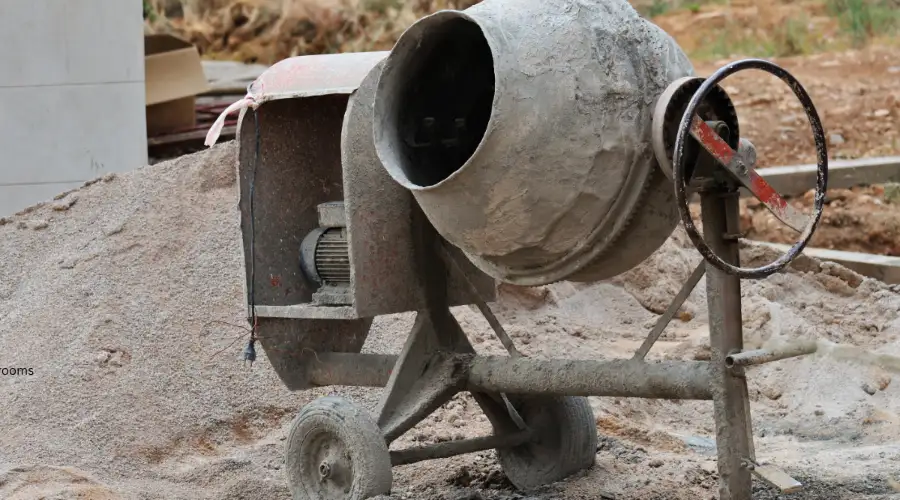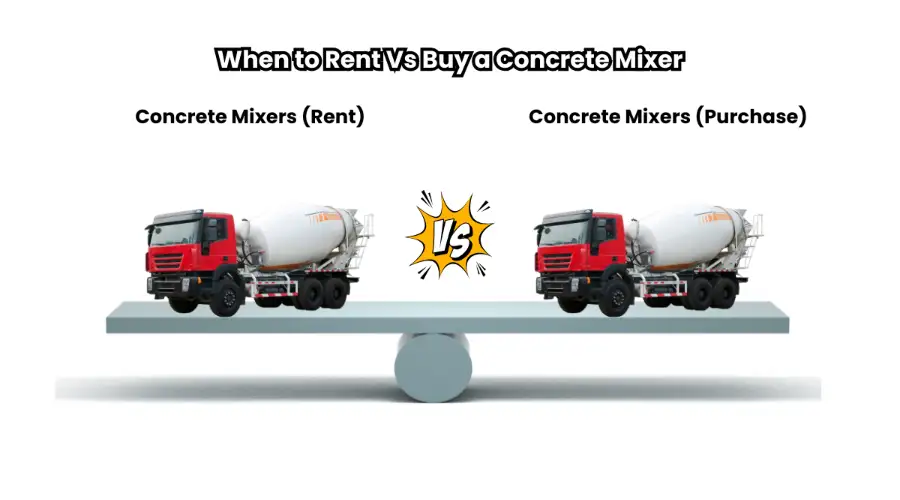Concrete mixers are essential elements of any construction project to increase the efficiency and consistency of concrete. It has become a must-have equipment in the construction sector. They are well known for saving time and labour. This capacity of concrete mixers makes them a preferred choice for all constructors, including residential, commercial, and industrial projects. The decrease in time and labour does not impact the quality of the mix. These mixers are available in various designs and capacities, catering to a wide range of applications. This article dives deep into the subject matter of concrete mixers, their types, factors that need to be considered while choosing one, and technical specifications. Overall, this article will provide a better understanding to boost your construction business efficiency.
Types of Concrete Mixers
There are many types of concrete mixers, each one catering to specific requirements of the construction project. The specific requirements here refer to the nature of the materials and the expected outcomes. The two broad categories of concrete mixer machines are concrete batch mixers and continuous mixers. Within these types, we have various sub-categories based on quantity, mechanism, and design of the mixer.
Concrete Batch Mixer: This type of mixer is used mainly for small to medium-sized construction projects as they can only mix a specific quantity of concrete at a time. It is more suitable for those projects that demand a small amount of concrete. This type consists of a drum or container to mix the ingredients based on the predetermined order. The size of mixers varies based on the quantity of cement that needs to be mixed. For example, the small batch mixers have a capacity of up to 1 cubic yard, whereas larger mixers can hold up to 6 cubic yards.

Drum Mixtures: It is a barrel-type mixer, mostly used to mix large quantities of concrete or cement. The process is done with the help of a barrel that rotates on its axis, with blades inside the barrel mixing the concrete as the barrel rotates. Its ability to mix large quantities at one go reduces the requirement for additional manpower throughout the process. This drum mixer is further classified into tilting, non-tilting, and reversing drum mixers.
Tilting Drum Mixers: In this type, the drum or barrel can be tilted to a certain angle to pour the mixed cement or concrete out of the barrel. This reduces the time consumed to unload the mixed cement compared to the conventional barrel type.
Non-Tilting Drum Mixer: Contrary to the tilting drum mixers, it does not have any tilting mechanism to pour out the cement on a designated spot. The process of pouring out cement from the barrel requires solely manual labour. However, it is preferred in many projects for its simple design and easy operation and requires low maintenance compared to other types.
Reversing Drum Mixers: The unique characteristic of a reversing drum is it can rotate the drum in both directions. This, in turn, increases the efficiency of the inner mixing blades to mix the material. This type can produce highly homogeneous concrete mixes such as wet mix and dry mixes. The cleaning process of the mixer after the process is over requires minimal effort.
Pan-Type Concrete Mixer: As the name suggests, this type of mixer has a circular-shaped mixing pan. This mixing pan is mounted on a horizontal frame with wheels. Similar to a reversing drum mixer, it can produce highly homogeneous concrete mixes.
Continuous Mixer: This type involves a continuous flow of materials inside the mixing chamber as they mix. It is distinct from batch mixers as they mix a set amount of material at a time. This mixer performs two processes at the same time. For example, it mixes the material continuously at one end and can discharge the mixed material at the other end. It is well-known for producing large quantities of homogeneous material in a short period. However, this type is not much preferred due to its high cost and large space requirement.
Factors to Consider When Choosing a Concrete Mixer
- Mixers are categorised into two based on the power requirement. One is fuel-powered mixer and the other one is an electric mixer. Fuel-powered cement mixers are robust, durable, and can mix larger volumes of concrete. However, they are not environmentally friendly compared to electric motors.
- The performance and capacity are other determinants in choosing the suitable one. For larger projects, prefer a concrete mixer type that has both a large unit capacity and the motor power rating of the machine.
- For small construction projects, choose a small-sized mixer as it is easy to move and occupies less space. If you want to mix cement in one go, opt for large capacity mixers.
- Durability of the cement mixer is essential while considering various factors. The machine should withstand the test of time. One must always remember the fact that construction tools experience wear and tear frequently.
- Portability of the cement mixers is determined based on the nature of the construction jobs. Based on the requirement, one can choose a stationary mixer or on-site movable units.
Technical Specifications
- The drum capacity of concrete mixers ranges from 120 litres for small mixers to 12 cubic meters for truck mixers.
- The motor power of the mixers determines the efficiency of the machine. The value of motor power ranges between 1 horsepower for small mixers to over 100 horsepower for larger ones.
- The mixing speed of the concrete mixers impacts the consistency of the mix. It is measured in revolutions per minute (RPM).
- Durability also determines the longevity and resistance of the mixer to wear and tear.
When to Rent Vs Buy a Concrete Mixer

| Concrete Mixers (Rent) | Concrete Mixers (Purchase) |
| It is cost-effective to rent a machine if the requirement is for a one-time occasion. | If the requirement may arise now and then, consider purchasing. |
| If it is a small-scale project, renting a mixer will save money. | For large-scale projects, especially those that need multiple mixers. |
| The advantage of renting is it requires lower upfront costs. | The advantage of purchasing the mixer is that it offers long-term savings if required periodically. |
Making the Final Decision
Model Comparison: Different models must be scrutinised or evaluated for their characteristics, specifications, and performance to find the best one to correspond to the project demands.
User Reviews: Check the reviews of other users through ratings for reliability and efficiency assessment of the mixer.
Checking Warranty Terms: Make sure the mixer comes with a comprehensive warranty, encompassing critical components and any possible problems.
Where to buy: Choose suppliers or dealers that are highly reputable or authorised to ensure authenticity and after-sale support.
Conclusion
Concrete mixers help you achieve efficiency and quality during construction work. Considering the types of cement mixers, their technical specifications, and cost implications will help you choose a suitable option for your project.
FAQs
The best way to calculate the capacity of any project is to estimate the volume of concrete required for the project and choose a mixer with a capacity slightly above that value to attain efficiency and downtime.
For small to medium projects, portable mixers are the preferred choice. Truck or continuous mixers are recommended for large-scale projects.
There is no set period to clean the mixer. Every operational session requires maintenance at the end. Clean the mixer after each use to prevent concrete buildup. This will increase efficiency and prevent any occurrence of mechanical issues.

